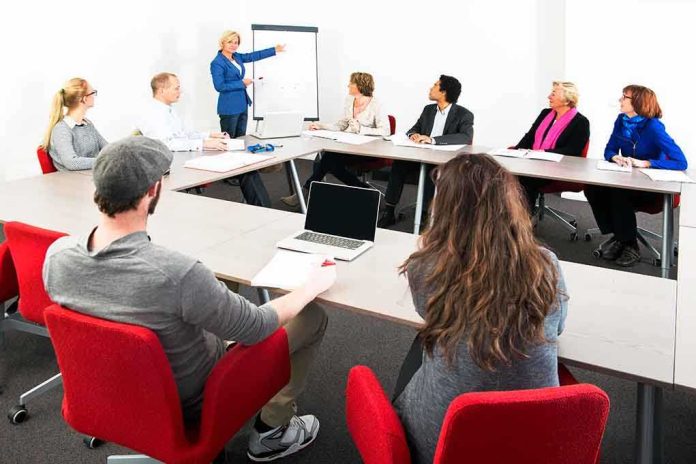
Your behind might be plotting a silent rebellion right now—and only you can stop the insidious flattening known as “office chair butt” before your favorite pants turn traitor.
At a Glance
- Prolonged sitting weakens and flattens your glute muscles, causing “office chair butt”
- Risk skyrocketed with remote work and pandemic-era desk habits
- Simple movement breaks and targeted exercises can rescue your rear
- Ergonomic chairs and sit-to-stand desks are weapons of prevention
How Office Chair Butt Sneaks Up on Desk Warriors
If you’ve ever stood up after a long Zoom call and felt like your backside had fused into the seat, you’re not alone. “Office chair butt” isn’t just a meme—it’s the real flattening and weakening of your glute muscles from long hours glued to a chair. The phenomenon, also called gluteal atrophy or “dead butt syndrome,” shot to infamy thanks to a global work-from-home experiment and the viral magic of social media. Imagine your strongest muscles slowly switching to airplane mode, all because your daily commute is now the 10-foot trudge from bed to desk.
The gluteal trio—maximus, medius, minimus—are powerhouses designed for movement, not for marathoning through spreadsheets with zero action. When they’re sidelined, your posture, comfort, and even your swagger suffer. This isn’t just about vanity or jeans fit; weak glutes can lead to chronic pain, numbness, and a domino effect of health woes that make your next physical therapy bill look like a ransom note.
Why Sedentary Living Is a Silent Saboteur
The sudden shift to remote work during the pandemic was like an open invitation for sedentary habits to crash the party. People swapped standing commutes for endless chair time, and the consequences crept in. Flattened backsides, sore hips, and backs that sound like popcorn at every stretch break became modern rites of passage. Yet, this isn’t just a remote work problem. Anyone tethered to a screen is at risk—from cubicle commandos to college students grinding through essays.
The science is simple: muscle inactivity leads to atrophy, and your glutes are among the first to file a complaint. Symptoms range from a saggier silhouette to full-blown discomfort and muscle weakness. If you’ve ever wondered why your chair feels molded to your body, it’s because—well—it just might be. Over time, these changes don’t just stay in your seat. They wander into your back, hips, and knees, spawning aches and pains that seem to multiply with every work anniversary.
How to Outsmart the Office Chair and Save Your Seat
The cavalry has arrived in the form of simple, equipment-free strategies. Experts—think fitness trainers, ergonomists, and even furniture designers—agree on one thing: your butt must move to survive. The gold standard? Stand, stretch, or walk for a few minutes every 45 to 60 minutes. Sneak in bodyweight squats, glute bridges, or even a little desk yoga. These tiny rebellions reawaken your glutes and keep atrophy at bay.
Ergonomics is more than a buzzword; it’s a lifestyle. Invest in a chair that promotes movement or try a sit-to-stand desk to add more variety to your day. Dynamic seats with self-adjusting recline mechanisms are like giving your glutes a gentle nudge every time you shift. If your company’s still stuck in the last century, you can lobby for wellness programs and better furniture—because a healthy workforce is a productive one, and nobody wants to be remembered as the boss who flattened morale and butts in one go.
What the Experts Say: The Glute Gospel
Alissa Mosca, a certified fitness trainer, recommends activating your glutes every hour—think of it as a butt reboot. Ergonomist Jonathan Puleio champions chairs that encourage you to move, not just sit still like a statue in a museum. Medical professionals warn that prolonged inactivity doesn’t just hurt your pride; it raises your risk for cardiovascular disease, chronic pain, and more.
Industry consensus is clear: movement and ergonomics are the winning combo. Whether you’re an employer, employee, or just someone tired of their own chair imprint, the solution is the same—move early, move often, and choose your office throne wisely. The future of work may be sedentary, but your glutes don’t have to be.






